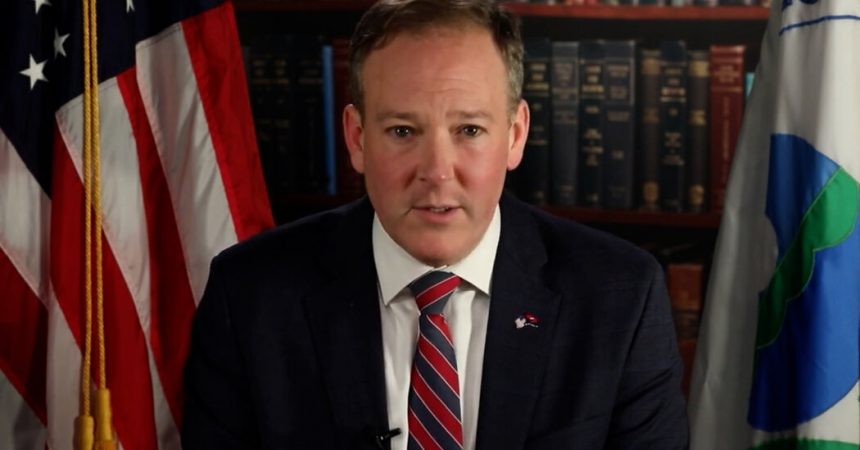The fate of $20 billion in federal climate funding that was legally committed months before the election has been thrown into question after a weeklong controversy involving “gold bars,” the right-wing group Project Veritas and two federal agencies.
Now, more than 200 planned investments intended to help finance clean energy and environmental projects in underserved communities may be at risk.
Last week, the Environmental Protection Agency issued a press release announcing it had found billions of dollars, or what it called “gold bars,” that had been “parked” at a financial institution during the Biden administration.
In a video accompanying the release, Lee Zeldin, the leader of the E.P.A., criticized the Biden administration’s decision to use a private bank to disburse the funds and called for Citibank, the bank in question, to return the money.
The money was “green bank” funding from the E.P.A.’s Greenhouse Gas Reduction Fund, which received $27 billion under the Biden-era 2022 Inflation Reduction Act.
Funds were held in Citibank accounts under the names of eight nonprofit grantees, which were planning to send it to other green banks and loan it out for climate projects.
Dept. of Justice resignation
The situation escalated on Tuesday, when Denise Cheung, a top federal prosecutor in Washington, D.C., abruptly resigned after she refused to open a criminal investigation into an unnamed government vendor and freeze unspent assets. The vendor is believed to be Citibank, and the assets in question are thought to be the $20 billion identified by Zeldin’s team.
Cheung said in a resignation letter that she felt there was not sufficient evidence to restrict the nonprofits’ access to the accounts.
By Thursday, it wasn’t clear whether Citibank would freeze the funds. That has created confusion among grant recipients about whether they’ll have access to the money.
The Department of Justice did not respond to a request for comment. A spokesperson for the E.P.A. referred to a post on Zeldin’s X account. Citibank declined to comment.
What about those ‘gold bars’?
“My awesome team at E.P.A. has found the gold bars,” Zeldin said in the video last week. “This scheme was the first of its kind in E.P.A. history, and it was purposely designed to obligate all of the money in a rush job with reduced oversight.”
The “gold bars” were a reference to a hidden-camera video released by Project Veritas in December. The video appeared to show a person who was then an E.P.A. adviser comparing the outgoing administration’s efforts to spend federal climate money before it left office to throwing “gold bars” off the Titanic.
Though Zeldin characterized the process as a “rush job,” plans to award $20 billion to the eight nonprofits were announced in April. The money was legally committed ahead of a September deadline.
The role of private banks
Thus far, there has been no evidence of illegal activity related to the $20 billion in funds. And the federal government has long made agreements with private banks, including Citibank, to handle financial transactions like the payment of government benefits with debit cards. A 2016 Government Accountability Office report found that one Treasury Department bureau was using 20 financial agents at the time.
Adam Kent, director of blended and inclusive finance at the Natural Resources Defense Council, said a financial agent had been chosen for the E.P.A. grants to make it easier for green banks to raise additional money from private markets. (Green banks typically use a mix of public and private money to fund decarbonization efforts.)
Last year the Biden administration estimated the funds would attract $7 in private capital for every government dollar spent.
Grants and subgrants
In an interview with Fox News last week, Zeldin described the eight nonprofit grantees with Citibank accounts as “pass-throughs, giving money to subgrantees.”
This is by design, said Katherine Mogg, who was formerly in charge of legal and regulatory affairs at NY Green Bank. (As of 2021, there were 21 green banks across the country.)
Mogg said that long before the Inflation Reduction Act was passed, green energy proponents debated how federal funding could best be spread out to projects all around the country.
These top-level nonprofits would send funding to smaller entities, like state green banks, and the sub-grantees would then lend money to individual projects, Mogg said. As loan recipients repaid their debt, green banks could use the money to fund more new projects.
What’s next?
Any attempt to freeze or claw back the green bank grants is likely to result in legal challenges.
Even a relatively short delay could affect long-term plans for businesses counting on the program. In the coming months, more than $1 billion in investments is scheduled to close, including funds for affordable home construction projects and solar farms in Native American and rural communities.
A slow-moving California landslide suddenly speeds up
Along the sparkling coast of Southern California, a string of landslides creeping toward the sea has transformed the wealthy community of Rancho Palos Verdes into a disaster zone.
New data from a NASA plane shows the widening threat of these slow-moving landslides, which have destabilized homes, businesses, and infrastructure like roads and utilities. Researchers have documented how the landslides have pushed westward, almost doubling in area since the state mapped them in 2007.
The landslides have also sped up in recent years. A month of aerial radar images taken by NASA in the fall revealed how land in the Palos Verdes Peninsula slid toward the ocean by as much as four inches each week between mid-September and mid-October. — Austyn Gaffney and Harry Stevens
Trump plans deep cuts at office that funds recovery from big disasters
The Trump administration plans to all but eliminate the office that oversees America’s recovery from the largest disasters, raising questions about how the United States will rebuild from hurricanes, wildfires and other calamities made worse by climate change.
The Office of Community Planning and Development, part of the Department of Housing and Urban Development, pays to rebuild homes and other recovery efforts after the country’s worst disasters, such as Hurricane Helene in North Carolina and Hurricane Milton in Florida. — Christopher Flavelle







